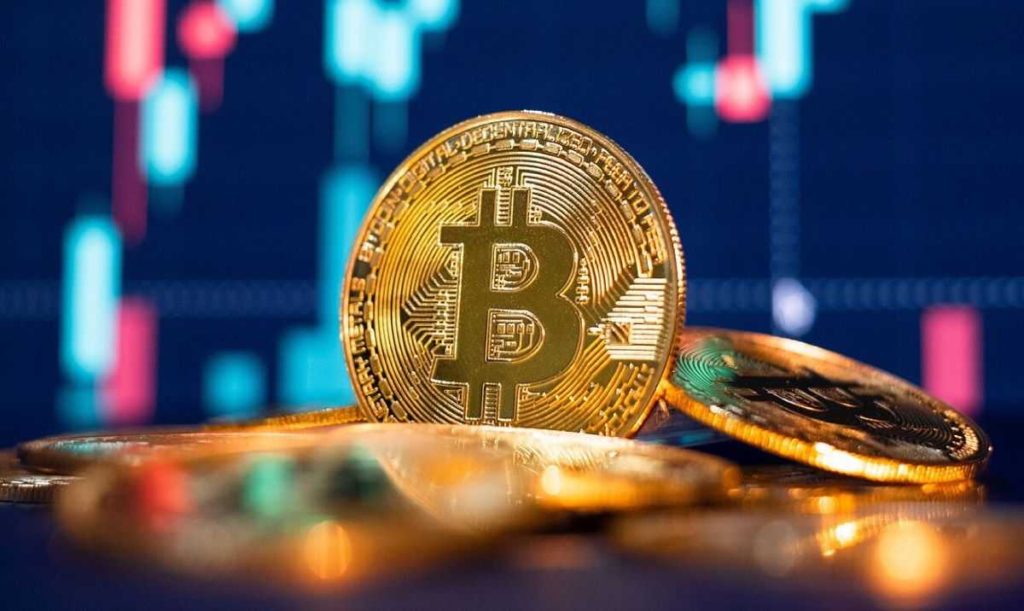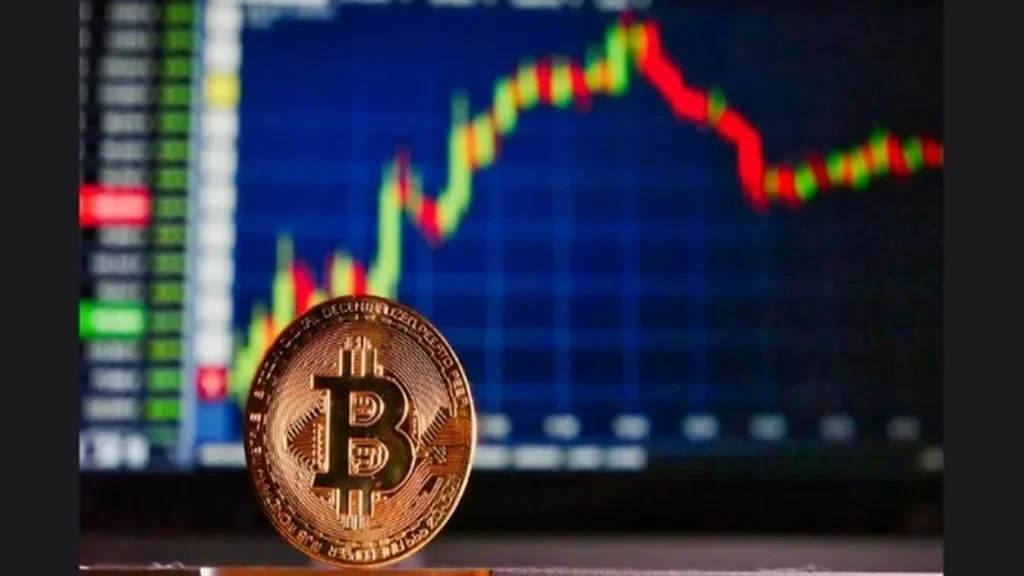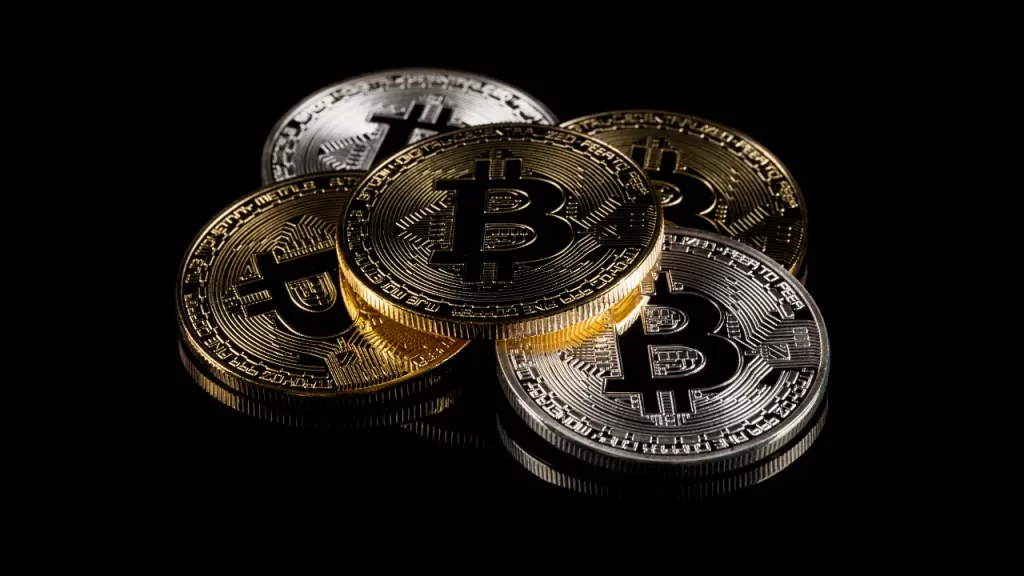Blockchain data analysts at Nansen have delved into the events leading up to the collapse of FTX, particularly focusing on the transfer of $4.1 billion worth of FTT tokens between FTX and Alameda Research, two companies founded by Sam Bankman-Fried.
This analysis comes as the former FTX CEO faces a barrage of charges in relation to the exchange’s downfall.
The demise of FTX was primarily triggered by initial reports highlighting that a substantial 40% chunk of Alameda’s $14.6 billion in assets was held in FTT tokens in September 2022.
However, Nansen’s findings reveal intriguing on-chain interactions between FTX and Alameda before these reports surfaced.
Between September 28 and November 1, Alameda transferred $4.1 billion worth of FTT tokens to FTX, along with numerous transactions involving US dollar-pegged stablecoins totaling $388 million.
Blockchain data further indicated that FTX possessed approximately 280 million FTT tokens, which accounted for 80% of the total FTT supply of 350 million tokens.
The data also revealed substantial FTT trading volume, amounting to billions of dollars, moving between various FTX and Alameda wallets.
READ MORE:The Best on the Market: Betfury Gives $1500 for Each Invited Friend
Nansen’s report highlighted that the majority of the FTT token supply, comprising company tokens and unsold non-company tokens, was locked in a three-year vesting contract controlled by an Alameda-owned wallet.
Considering that both companies controlled around 90% of the FTT token supply, Nansen suggests that they may have mutually supported each other’s balance sheets.
The report also proposes that Alameda likely sold FTT tokens over-the-counter and used them as collateral for loans from cryptocurrency lending firms, supported by historical on-chain data showing substantial inflows and outflows between FTX, Alameda, and Genesis Trading wallets, with transfer volumes reaching $1.7 billion in December 2021.
The collapse of the Terra ecosystem and the subsequent bankruptcy of Three Arrows Capital (3AC) seemingly led to liquidity problems for Alameda due to the drop in FTT’s value. This resulted in a concealed $4 billion FTT-backed loan from FTX.
Nansen’s on-chain data aligns with this theory, showing that around June 2022, Alameda sent approximately 163 million FTT tokens to FTX wallets, valued at roughly $4 billion at the time—a figure consistent with statements made by Bankman-Fried’s associates in an interview with Reuters.
Lastly, blockchain data indicates that Alameda was unable to fulfill an offer to purchase FTT tokens from Binance at $22 on November 6, following negative reports about Alameda’s financial health, as announced by Binance CEO Changpeng Zhao.
Other Stories:
Q3 2023 Records $700 Million in Digital Asset Losses, CertiK Report Reveals
$332 Million Lost in September 2023, Q3 Losses Near $890 Million
Former FTX CEO Wanted to Offer Donald Trump $5 Billion Not to Run for President
The third quarter of 2023 has proven to be the most financially detrimental period of the year for the cryptocurrency market, as disclosed in the quarterly report by blockchain security firm CertiK.
During this quarter, an alarming tally of $700 million in digital assets succumbed to various security breaches and incidents.
CertiK’s report documented a total of 184 security incidents transpiring in July, August, and September 2023.
These incidents resulted in crypto asset losses exceeding $699 million for the quarter, a substantial escalation compared to the $320 million loss incurred in the first quarter and the $313 million loss in the second quarter.
Private key compromises were identified as the most pernicious of these incidents, siphoning over $204 million across 14 separate cases.
A pivotal example was the Multichain incident, wherein private keys rested solely in the control of the project’s CEO, ultimately leading to a staggering $125 million loss.
This incident underscored the vulnerability posed by centralized control of private keys for businesses and resulted in the cessation of Multichain’s operations.
Beyond private key exploits, exit scams and oracle manipulation surfaced as prominent issues during the quarter.
The report highlighted a total of 93 exit scam incidents, which collectively seized more than $55 million in digital assets.
READ MORE: Space and Time Integrates Its Proof of SQL Verifier Into Chainlink Nodes
Furthermore, 38 incidents of oracle manipulation resulted in crypto losses surpassing $16 million.
In September, the cryptocurrency world experienced its largest exploit of the year when the cross-chain protocol Mixin Network fell victim to an attack.
On September 25th, Mixin Network halted all withdrawals and deposits in the wake of the breach, which ultimately drained $200 million worth of assets from its mainnet.
CertiK’s quarterly report also cast a spotlight on the persistent threat posed by North Korea’s state-affiliated hacking group, Lazarus. The report identified Lazarus as a dominant threat actor, accountable for confirmed losses totaling at least $291 million in 2023.
The group continued its malicious activities throughout the third quarter, underscoring the ongoing challenges faced by the cryptocurrency ecosystem in combating cyber threats.
In summary, the third quarter of 2023 has been marked by unprecedented financial losses in the cryptocurrency market, driven by a range of security incidents.
The report by CertiK underscores the urgent need for enhanced security measures and vigilance within the blockchain and cryptocurrency industry to safeguard digital assets against evolving threats.
Other Stories:
Google Cloud Joins Polygon Network as Validator, Boosting Blockchain Security
SEC Delays Decision on Spot Bitcoin ETF Proposals Amid Looming Government Shutdown
Venture Capital Firm Paradigm Criticizes SEC’s Unconventional Approach in Binance Case
The Brazilian government has announced a groundbreaking initiative to implement blockchain technology for digital identity, which will impact over 214 million Brazilians.
This transformative project is set to roll out initially in the states of Rio de Janeiro, Goiás, and Paraná.
Serpro, Brazil’s national data processing service, has developed a private blockchain specifically for this purpose.
According to a decree issued on September 25th, the entire nation is expected to adopt blockchain technology for identity documents by November 6th.
The president of Serpro, Alexandre Amorim, emphasized the importance of blockchain for this digital identification project.
He highlighted blockchain’s key attributes, such as immutability and decentralization, which are instrumental in safeguarding personal data and preventing fraudulent activities.
The adoption of the b-Cadastros blockchain platform significantly enhances the security and reliability of the National Identity Card project.
The government has underscored the significance of the national ID project in combating organized crime, facilitating collaboration between government sectors, simplifying access to services, and streamlining administrative records.
READ MORE: New U.S. Bill Proposes Enhanced Oversight for Cryptocurrency Transactions
This initiative mirrors a similar effort in Buenos Aires, Argentina, where residents can access identity documents through a digital wallet.
Over recent years, Brazil has been working towards a unified identity issuance system across its nearly 30 states.
The adoption of blockchain technology will foster more secure data exchange between the Federal Revenue and various government departments, enhancing overall efficiency and security.
In addition to the digital identity project, Brazil is also making strides in the realm of central bank digital currencies (CBDCs).
In August, the government provided further details about this initiative, which has been rebranded as “Drex.”
The central bank plans to expand business access to capital through a tokenization system associated with Drex.
However, concerns have been raised about the Drex code, as it could potentially allow a central authority to freeze funds or reduce balances, as noted by a local developer.
As Brazil takes pioneering steps in the realms of blockchain-based digital identity and CBDCs, the nation is poised to transform the way its citizens access services, conduct financial transactions, and protect their personal data, all while enhancing security and efficiency in government operations.
Other Stories:
NFT Artist Raises £114,000 at Edinburgh Charity Event to Support Cancer Treatment
French Authorities Conduct Surprise Raid on Nvidia’s Offices Amid Antitrust Inquiry
A celebrated nonfungible token (NFT) artist, Trevor Jones, hailing from the picturesque landscapes of Scotland, has emerged as a beacon of hope for the cause of cancer treatment.
His recent efforts at an art event in the enchanting city of Edinburgh, Scotland, have managed to raise an impressive sum of nearly $140,000, equivalent to 114,000 British pounds.
This substantial contribution is intended to bolster the noble mission of Maggie’s Edinburgh, an institution wholeheartedly dedicated to providing free cancer treatment.
Trevor Jones, known for his prowess in the world of crypto art, orchestrated a charity exhibition and auction at the annual Web3 Castle Party, a vibrant gathering situated near the enchanting city of Paris.
This remarkable endeavor culminated in the remarkable donation of 114,000 pounds to Maggie’s Edinburgh, marking an unprecedented milestone in the institution’s 27-year history.
A spokesperson representing Maggie’s Edinburgh gratefully attributed this resounding success to the unwavering support and enthusiasm of the NFT art community.
The substantial funds collected through Trevor Jones’s charitable efforts are poised to be a lifeline for over 4,000 individuals grappling with the dire effects of cancer and for the local communities in need of critical support.
The exhibition, hosted within the enchanting confines of Château de Vallery near Paris, brought together a consortium of 30 gifted artists, all uniting for a common cause.
In heartfelt words, Trevor Jones shared his sentiments regarding the event, stating, “The funds raised from NFT artists will make a huge difference and will go to support services for those affected by a cancer diagnosis — patients and their families.
READ MORE: Crypto Trader’s Cross-Country Journey Ends in Seattle: A Bitter Twist of Fate
This is certainly a wonderful way to remember such a beloved artist, also taken by this disease.”
The world of NFTs catapulted into mainstream consciousness in 2021, ushering in a sub-ecosystem that has played a pivotal role in numerous philanthropic endeavors.
From bolstering mental health initiatives to aiding war victims and supporting the United Nations Children’s Fund (UNICEF), NFT and cryptocurrency enthusiasts have consistently contributed to the betterment of global society.
Notably, the United States Federal Election Commission granted approval for the utilization of NFTs as a campaign fundraising incentive last year, underlining the growing acceptance and significance of these digital assets.
Major corporate entities like Coca-Cola, humanitarian organizations such as the Singapore Red Cross, and government bodies have also embraced NFTs and cryptocurrency donations as a means to fuel various philanthropic initiatives.
This fusion of technology and charity exemplifies the potential for positive change when innovation meets compassion.
Other Stories:
Binance Completes Exit from Russian Market, Sells Operations to CommEX
Hypothekarbank Lenzburg Joins SDX: Swiss Bank Expands Digital Asset Presence
Major Cryptocurrency Exchange Bitspay Faces Scrutiny Over Alleged Fake License Claims
Terraform Labs co-founder Do Kwon’s legal team has filed a request with a federal court to deny the United States Securities and Exchange Commission’s (SEC) request for his interrogation in the United States regarding the Terra ecosystem’s collapse.
In a filing dated September 27, Kwon’s legal representatives argued that the SEC’s demand for questioning in the U.S. before October 13 was unfeasible due to Kwon’s current detention in Montenegro, where there is no established release or extradition timeline.
Moreover, Kwon’s defense asserted that providing written testimony to address the SEC’s inquiries would violate his right to due process under U.S. law, stating that “an order mandating something that is impossible serves no practical purpose and risks undermining judicial authority.”
Notably, Kwon’s legal team clarified that Kwon did not outright oppose a deposition but suggested that it should be conducted in Montenegro, where the Terra founder is currently out on bail.
The filing highlighted that the cut-off date for discovery in the SEC’s case against Kwon and Terraform Labs is October 13.
READ MORE: Binance and Mitsubishi UFJ Trust Collaborate on Japanese Stablecoin Initiative
Kwon’s lawyers also noted that a Montenegrin court had “informally” indicated the possibility of holding a hearing on October 13 or October 26, during which Kwon would be asked the SEC’s questions.
However, the SEC indicated that it might consider this process as “inadequate” and could pursue another deposition of Kwon after the discovery cut-off date.
The SEC had filed a lawsuit against Terraform Labs and Kwon on February 16, alleging their involvement in a “multi-billion dollar crypto asset securities fraud.”
According to the SEC, Terraform and Kwon promoted their Anchor Protocol, which at one point promised a 20% interest rate on TerraUSD (UST) deposits, while also misleading investors about Terra’s stablecoin’s stability.
Kwon and Terraform Labs’ chief financial officer, Han Chang-Joon, were arrested in Montenegro in March 2023 for allegedly using false travel documents while attempting to leave the country.
Their original passports had been confiscated in South Korea in October 2022.
Other Stories:
‘BitBoy’ Arrested During Livestream Outside Former Associate’s Home Over Lamborghini Dispute
EOS Is Becoming a Climate Positive Network That Will Offset Its Energy Consumption by 3x
Judge Allows Evidence of Political Donations in Sam Bankman-Fried’s Fraud Trial
Binance, a prominent cryptocurrency exchange, has issued a call to action for its European user base, urging them to swiftly convert their euros into Tether (USDT) before the conclusion of October.
This plea comes in response to the loss of support from their banking partner, Paysafe.
On September 28th, Binance issued a notice to European Paysafe users, instructing them to convert their EUR balances within their Binance accounts to USDT by October 31st.
The reason cited was Paysafe’s unilateral decision to cease processing EUR deposits for Binance users.
Despite this setback, Binance clarified that users would still retain the ability to withdraw their EUR balances from their Binance accounts to their bank accounts, providing a semblance of relief to those affected.
The exchange emphasized the importance of Paysafe users taking preemptive measures.
Paysafe’s suspension of euro deposits occurred on September 25th, signaling the abrupt end of their support for fiat deposits and withdrawals for Binance users in Europe.
This included facilitating transactions via bank transfers within the European Union’s Single Euro Payments Area (SEPA).
Binance revealed that as a response to these developments, EUR spot trading pairs would no longer be accessible as of September 28th at 4:00 am UTC, with open orders being canceled an hour later.
READ MORE: Judge Allows Evidence of Political Donations in Sam Bankman-Fried’s Fraud Trial
Furthermore, the usage of Binance Convert, which functions like a token swap, would also be limited for EUR transactions.
Concerns regarding these changes prompted questions from users on social media platforms such as Twitter, with some inquiring about the apparent delisting of Euro options on the exchange.
Binance’s recent struggles with regulatory compliance and the loss of banking partners have compounded its challenges in Western markets.
Paysafe had already withdrawn support for transactions in British pounds earlier in the year due to concerns raised by UK financial regulators.
Additionally, Binance announced its departure from the Netherlands in June, and Belgian authorities ordered the cessation of its services within a week.
However, it was reported on September 26th that new registrations from Belgian residents had been reopened, offering a glimmer of hope amidst the tumultuous situation.
In light of these challenges, Binance has committed to working towards integrating new fiat channels onto its platform, signaling its determination to navigate the evolving regulatory landscape in the cryptocurrency industry.
Other Stories:
Binance and Mitsubishi UFJ Trust Collaborate on Japanese Stablecoin Initiative
EOS Is Becoming a Climate Positive Network That Will Offset Its Energy Consumption by 3x
‘BitBoy’ Arrested During Livestream Outside Former Associate’s Home Over Lamborghini Dispute
Arkham, a blockchain intelligence platform, recently unveiled a startling revelation: cryptocurrency giant Coinbase boasts an astonishing stash of nearly 1 million Bitcoins within its wallets.
In the current volatile crypto market, these coins carry a staggering valuation of over $25 billion.
To put this revelation into perspective, Arkham’s findings indicate that Coinbase’s holdings represent approximately 5% of the entire global Bitcoin supply.
Their meticulous analysis discerned a grand total of 947,755 BTC under Coinbase’s control, while the circulating supply of Bitcoin stands at approximately 19,493,537 according to CoinGecko, a trusted source for crypto data.
What’s more, Arkham’s investigations didn’t stop at the sheer volume of holdings.
They went on to identify a staggering 36 million Bitcoin deposit and holding addresses linked to the exchange.
In particular, Arkham pointed out that Coinbase’s largest cold wallet alone shelters around 10,000 BTC.
Remarkably, the intelligence experts at Arkham speculate that Coinbase might have undisclosed Bitcoin holdings that remain off the radar, eluding identification.
However, there’s a twist in the tale. Despite Coinbase’s colossal BTC holdings, the exchange technically only “owns” a fraction of this digital goldmine.
READ MORE: South Korean City Aims to Become a Leading Blockchain Hub with $75 Million Investment
In fact, recent data shows that Coinbase has direct ownership of roughly 10,000 of the Bitcoins it houses, which translates to a value of approximately $200 million.
This revelation highlights the complex dynamics of cryptocurrency exchanges and their role as custodians of user assets.
The cryptocurrency community erupted in a flurry of reactions upon learning about Coinbase’s substantial Bitcoin reserves.
Some individuals took it as a warning sign, advocating for the withdrawal of BTC from centralized exchanges, cautioning against waiting until withdrawals are suspended.
Others argued that concerns surrounding the security of cold wallets make it challenging for holders to find a truly safe storage solution for their digital assets.
It’s worth noting that when it comes to corporate Bitcoin ownership, MicroStrategy, a business intelligence firm, continues to reign supreme.
As of the latest available data, MicroStrategy’s co-founder Michael Saylor proudly declared the company’s possession of a staggering 152,800 BTC, with a valuation exceeding $4 billion.
This further underscores the growing trend of institutional adoption of Bitcoin as a store of value.
Other Stories:
IRM Report Highlights Bitcoin’s Potential as a Driver of Global Energy Transition
Alchemy Pay Secures Key U.S. Money Transmitter License, Expanding Crypto-to-Fiat Services
CBDC Anti-Surveillance State Act Clears Hurdle, Advances to Congressional Vote
August marked a somber chapter in the world of cryptocurrencies, echoing the depths of despair seen since Bitcoin’s slump in November 2022.
Initially dismissed as a typical summer downturn, this month took a grave turn as liquidations rippled through the derivatives market, erasing 7.3% of Bitcoin’s value and 6.9% of Ether’s.
Even Grayscale’s court victory proved ephemeral as prices reverted to their August beginnings, resulting in a staggering $1 billion in liquidation losses when Bitcoin plummeted to $26,000.
Adding to the industry’s woes, venture capital (VC) investments declined by 42.7% from July to August, amassing a mere $401.9 million across 77 transactions. What had been a thriving crypto investment landscape until May this year is now dwindling.
The Cointelegraph Research “Investor Insights Report” offers a comprehensive monthly overview of the crypto realm, encompassing venture capital, derivatives, decentralized finance (DeFi), regulation, mining, and more.
VC investments in blockchain have been on the decline since Q2 2022, plummeting to a new low of $401 million in 2023.
Infrastructure projects secured 18 separate deals, accumulating $107 million in August, while centralized finance (CeFi) raised $100 million across just three deals.
These investments are typically lagging indicators, suggesting a potential resurgence when overall market sentiment shifts positively.
Yet, as Tim Draper aptly noted in a Cointelegraph Research interview, investors often miss the mark, implying that investing during the downturn may present opportunities to discover quality projects for the future bull market.
The expiration of $1.9 billion in monthly Bitcoin options on August 25 spurred market speculation.
READ MORE: Binance.US Challenges SEC’s ‘Unreasonable’ Demands in Legal Showdown
Although Bitcoin’s price remained relatively stable, excitement swirled when news of the SEC’s court loss against Grayscale surfaced, hinting at a future spot Bitcoin ETF.
The resulting price surge to $28,000 was short-lived, reverting to $26,000. Nonetheless, this range shows signs of market support.
Cointelegraph Research’s team boasts expertise in various fields, merging academic rigor with practical experience.
Their dedication ensures the delivery of the most precise and insightful content in the blockchain domain.
In conclusion, August brought crypto markets to their knees, with dwindling VC investments and a rollercoaster of price fluctuations.
While the landscape may appear bleak, seasoned investors see potential in these trying times, keeping an eye on quality projects for the impending bull market resurgence.
Remember, these opinions serve as general information and are not intended as specific financial advice or recommendations.
Other Stories:
Prominent Executives Predict Bitcoin Could Surpass $100,000 in 2024
Former PayPal President Predicts Bitcoin Lightning Network Revolutionizing Global Payments
2023 Crypto Venture Capital Funding Plummets As Industry Faces Uncertain Times
In 2023, the crypto space has experienced a stark contrast to the booming venture capital (VC) funding it witnessed in 2022.
Last year, the first and second quarters together witnessed an influx of a substantial $20.3 billion in VC funding. However, this year has been notably deficient in comparison.
VC funding in the crypto sector has noticeably dwindled throughout 2023. In the initial quarter, approximately $2.6 billion worth of crypto VC deals transpired.
The second quarter fared even worse, with approximately $2.1 billion distributed across 292 funding rounds, marking one of the weakest performances in the realm of crypto fundraising.
Amidst this VC funding slump, Tony Cheng, a partner at the crypto investment firm Foresight Ventures, shared insights during an interview with Cointelegraph’s Zhiyuan Sun.
Cheng discussed the factors contributing to the decreased interest from venture capital firms, strategies for founders to weather the bear market, and the ongoing debate between user growth and profitability for crypto companies.
Cheng noted that many of the prevailing narratives in the crypto space, such as layer-2 solutions, zero-knowledge proofs, and nonfungible tokens (NFTs), have plateaued.
READ MORE: Coinbase CEO Foresees Crypto’s Major Role in 2024 Elections, Urges Clearer Regulations
These once-prominent trends have seen reduced trading volumes on exchanges and in decentralized finance (DeFi), leading Cheng to remark that they have “kind of died down.”
He identified the lack of new innovations as a major hindrance to confidence and investment in the crypto sector.
While acknowledging the limited market activity and user base, Cheng remained cautiously optimistic, anticipating a potential turnaround with improved market conditions and increased enthusiasm for the next crypto cycle.
In response to whether founders should accept less favorable funding terms, Cheng emphasized the paramount importance of survival.
He urged struggling projects to secure capital to ensure their viability in the coming months, as future funding availability remains uncertain.
Cheng stressed that, given the prevailing bear market conditions, pursuing a “growth at all costs” strategy may no longer be viable. Instead, he advised crypto companies to prioritize profitability and financial stability.
In times of economic downturn, survival takes precedence above all else, safeguarding the progress achieved in the crypto space over recent years.
Other Stories:
Vitalik Buterin’s X Account Breached: Over $691K Lost to Malicious NFT Link
Rise of Senior Executives Leading Digital Asset Strategies Signals Investment Firm Transformation
Terra Classic Community Proposes Minimum Deposit Hike to Combat Spam
In an exclusive interview with Cointelegraph, Senator Andrew Bragg has issued a stark warning, stating that Australian investors could face exposure to unregulated markets and risk driving investments away from the country if the Digital Assets (Market Regulation) Bill is rejected by parliament.
This caution comes in the wake of the Senate Committee on Economics Legislation’s recommendation on September 4th to reject Bragg’s bill and continue industry consultations regarding cryptocurrency regulation.
Labor Party Senator Jess Walsh, who chairs the Committee, explained the rejection in a report, citing concerns that the bill “fails to interoperate with the established regulatory landscape, creating a genuine concern for regulatory arbitrage and adverse outcomes to the industry.”
Senator Bragg expressed his disappointment with the Committee’s recommendation, emphasizing that it would “expose consumers to an unregulated market and drive investment offshore.”
He underscored the dual purpose of digital asset regulations, asserting that they safeguard consumers while also fostering market investment and activity, which is why the former Liberal government placed them on the legislative agenda in October 2021.
Bragg believes that the rejection of his bill is largely rooted in partisan politics, as several Labor Party members sit on the Senate Committee.
He criticized their decision for stalling the implementation of digital asset regulations in Australia, lamenting that Australia is now approaching the end of 2023 with no plan to enact these regulations.
However, Liam Hennessey, a partner at international law firm Clyde & Co., offered a different perspective.
He suggested that the rejection may be more related to a separate regulatory process, specifically the Treasury’s consultation paper on the government’s “token mapping” exercise.
Hennessey emphasized that the rejection of Bragg’s draft bill may not necessarily be detrimental to crypto regulation in Australia.
Hennessey explained that Senator Bragg’s bill and the feedback it received from the industry would still be considered.
READ MORE:Coinbase Launches Institutional Crypto Lending Service Amid Market Turbulence
The Senate is currently dealing with a multitude of legislation, and the delay should not be overanalyzed.
He concluded that Bragg’s bill and the effort put into it would inform the government’s approach to crypto regulation.
The Australian government initiated a token mapping exercise in August, aiming to identify how crypto assets and related services should be regulated.
In February, the Treasury released a public consultation paper as a foundational step in regulating the digital asset market.
However, there has been little mention of digital assets or the broader regulatory approach since then.
Bragg introduced the Digital Assets (Market Regulation) Bill 2023 in March, intending to protect consumers and promote investors.
The bill contains recommendations for regulating stablecoins, licensing exchanges, and establishing custody requirements.
It is currently before the Senate and is expected to be voted on during the next sitting session.
Other Stories:
Ethereum’s Price Stability Under Threat as Bearish Sentiment and Network Metrics Weigh In
MetaMask Users Targeted in Cryptocurrency Scam Using Government Website URLs
Bitcoin’s Price Correction to $22,000 Grows Likely as Bearish Signals Emerge in Derivatives












